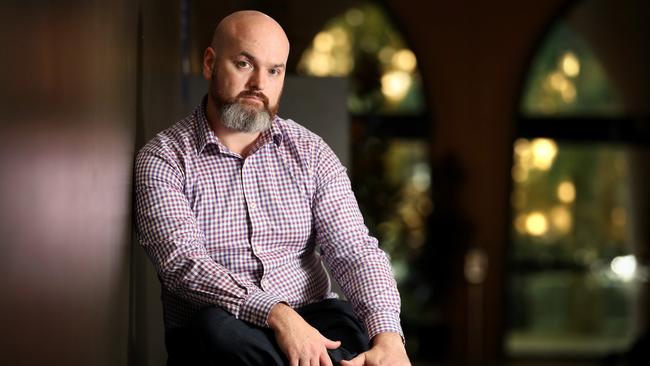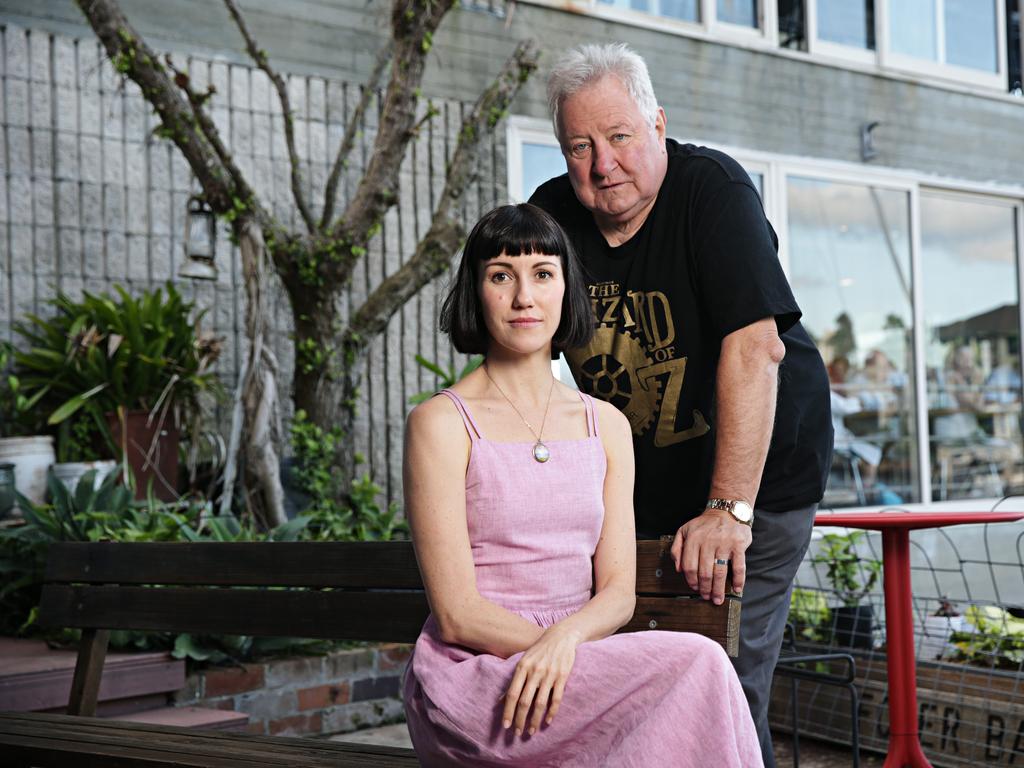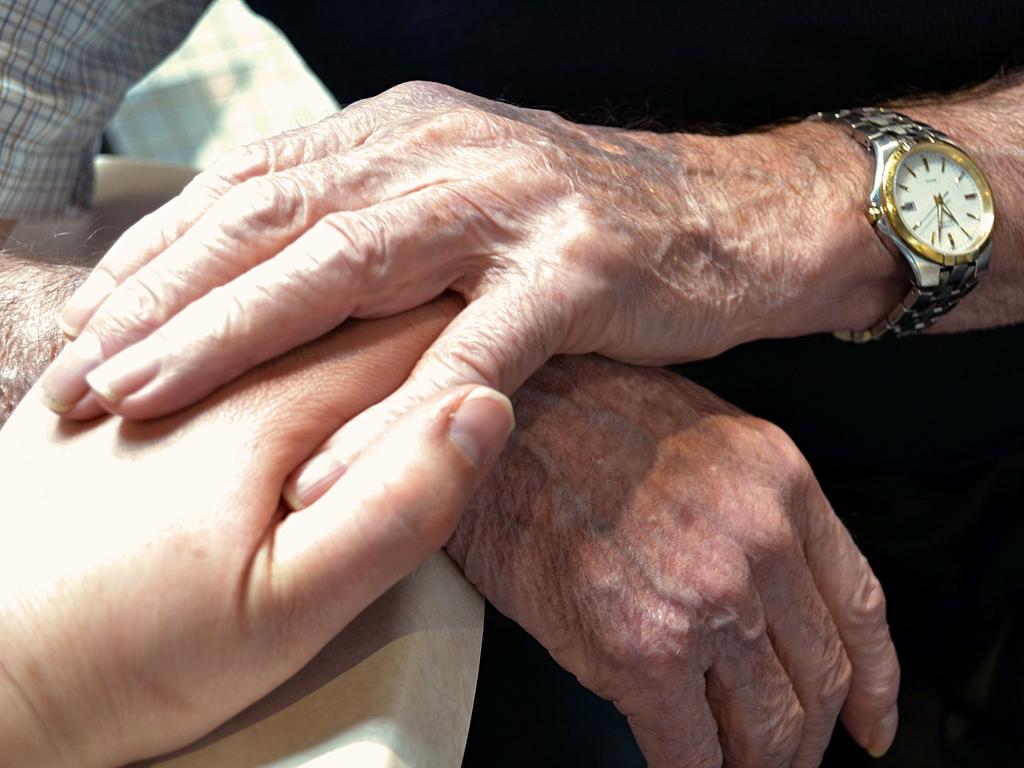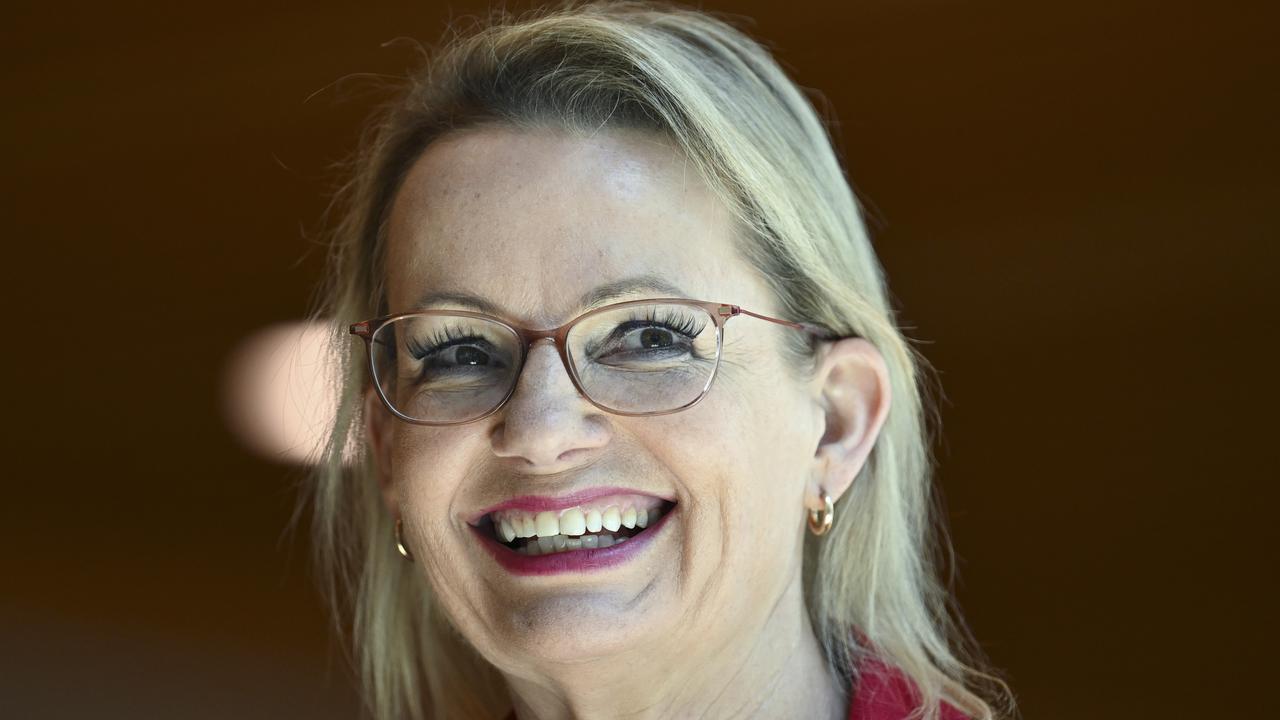‘They never flinch’ when they take the deadly dose, says death doctor
Cameron McLaren has been in the room 13 times when a patient has ended their life under Victoria’s new voluntary assisted dying laws.

Cameron McLaren has noticed the same thing each time.
“The atmosphere has been very peaceful. It’s been a real moment of closure for the families to say goodbye,” the oncologist tells The Weekend Australian.
“I’m still surprised by how I’ve never seen a person flinch about picking up or taking the drink. They are so committed to it.”
McLaren has been in the room 13 times when a patient has ended their life under Victoria’s new voluntary assisted dying laws. Three times he has personally administered a range of drugs including Midazolam and Rocuronium through intravenous injection, and a further 10 times he has been there to support the families as their loved one drinks a lethal dose of Pentobarbital.
McLaren is one of the few specialist practitioners operating in the only current legal euthanasia regime in Australia. He has been involved in 37 cases so far; in 17 of them, medication has been delivered to the patient. A report released this week by the state’s Voluntary Assisted Dying Review Board said that between June and December last year, 136 people commenced the assessment process to determine their eligibility for VAD, as it is known, 66 have had medication dispensed and 52 ended their lives. This was a far greater initial uptake than the Andrews government had anticipated.
Despite the scheme’s unexpectedly high uptake, it remains controversial. The Victorian and federal governments are at odds, and members of Premier Daniel Andrews’s frontbench still oppose the laws eight months after their introduction.
The laws are anathema to some religious hospitals and institutions. But for McLaren, they simply make sense.
“These people are incredibly grateful that the topic of their death can be openly discussed with a doctor,” he says. “They’ve come to terms with the fact they are going to die. They know where they are on the cancer journey and just want an upfront discussion about it. They are sick of having discussions with people who haven’t accepted it.”
McLaren has always been in favour of euthanasia. And, make no mistake, whatever the semantics, these are euthanasia laws. While providing a patient with drugs that they can self-administer is voluntary assisted dying, going the next step and intravenously administering the drugs to a willing patient is fairly and squarely within the definition of euthanasia.
“I grew up with animals and we always did the humane thing for them, but we didn’t do it for humans,” McLaren says. “There was irony in the word humane only being applied to animals. I didn’t like to see people suffering.” McLaren undertook the training to become a co-ordinating medical practitioner under the VAD scheme, a logical progression from his oncology practice, he says.
“I didn’t want a patient to come to me for a cancer journey but then at the end I wasn’t prepared to, or able to, take them all the way to the finish line,” he says.
One person almost at the finish line is a 59-year-old patient of McLaren working his way through the voluntary assisted dying process. The Weekend Australian spoke to the man, who requested anonymity.
“Ron” was diagnosed with lung cancer in 2016 after going to the doctor with a swollen lymph node in his neck. The diagnosis wasn’t good, and the cancer spread to his oesophagus. He left his blue-collar job, having lost the strength to keep going.
“I’ve had radiation, chemotherapy, immunotherapy. I have no more options, treatment-wise,” he says. “I’ve come to the end of the road. All I’ve done for years is sit in doctors’ rooms and have scans. I’m so glad to have the opportunity not to suffer at the end. I fear I would suffer terribly at the end stage. I’m very, very sick. I can feel that I’m dying, but I don’t want to be in a vegetative state, stuck in a hospital bed until I die.”
After receiving palliative treatment, Ron approached McLaren as an accredited co-ordinating medical practitioner 11 days ago. This was the first of a series of administrative hurdles. Under the VAD legislation, he also had a separate consulting assessment. One doctor must be a specialist in the relevant field, in this case oncology. Both doctors independently determined he met the eligibility criteria — an adult over 18 with an incurable disease and a prognosis of death within six months (or 12 months for a neurodegenerative condition such as motor neurone disease or multiple sclerosis); experiencing what the patient considers “intolerable” suffering; has decision-making capacity; and is an Australian citizen or permanent resident who has lived in Victoria for the past 12 months.
On Thursday, Ron attended McLaren’s surgery to secure two more signatures on his application to allow him to die at the time of his choosing. The witnesses attested that Ron was of independent mind and under no obvious coercion to pursue the path of voluntary assisted dying.
Ron is still a number of steps from receiving his lethal dose of Pentobarbital. McLaren explains: “The Voluntary Assisted Dying Review Board must turn his application around within three working days. If they agree, I as the co-ordinating doctor then apply to Safer Care Victoria for a permit to prescribe Pentobarbital. After they review it, they will issue a permit number which is included on my prescription. That prescription must be hand-delivered to a pharmacist from the Statewide Pharmacy, who takes me through a checklist of screening questions about the patient’s knowledge of the procedure, any issues in their home etc. Then the pharmacy hand-delivers the medication to the patient, either at home or the hospital.
“Some conscientious objection facilities won’t accept that pharmacist’s visit, some religious hospitals for instance, but we can organise day leave for them to receive the medication.”
Ron says he won’t use the lethal dose straight away. “I’m under no obligation to take it until I want to, and I’m not at that point yet. But day by day things are getting harder. I know my time is not far away.”
His mother and sister will be by his side when the final moment comes. “My mother is not coping well. She’s like any other mother. She doesn’t want to see her son die. But they think I’m doing the right thing. They don’t want to see me suffer any more.”
So what’s it like inside the room when a person takes the ultimate step? McLaren says relatives are often opposed to their loved one actively taking steps to die voluntarily, but when the day comes they are supportive, and the moment itself is usually calm.
He says that as a clinician it’s a rewarding experience to be in the room. “It’s what patients and their families want, they get comfort, peace and a dignified death,” he says. “This system has a role alongside palliative care, which does a fantastic job in this country with an underfunded budget. But it’s not a replacement for palliative care. Even with the best palliative care in the world, there is still a place for voluntary assisted dying. People want control over the end of their lives.”
Euthanasia is contested territory. While Andrews supported the legislation when it was being debated in 2017, key colleagues including ministers James Merlino and Marlene Kairouz crossed the floor. In his speech to parliament, Andrews was moved by the accounts of people whose relatives had been pushed to ending their lives in horrific ways, without the option of VAD. And those who had lived in incredible pain before eventually dying.
“Nobody should have to live their last days like this,” Andrews said. “No one should have to suffer a bad death in the name of good ethics.”
Andrews reflected on his own father’s death from cancer. “Only when you’ve seen someone you love succumb feebly and painfully to what some people might even describe as a ‘good death’, you start to think what on earth might qualify as a ‘bad death’,” he said. “Right now so many Victorians in the final months of a terminal disease are suffering far worse than my father did, and who am I to deny them relief?”
This week Kairouz continued to raise concerns, saying she was “deeply concerned” about the number of people “committing suicide” under the scheme. “It’d be no surprise to anybody that I have some concerns about the number of people who are taking their lives (under the voluntary assisted dying scheme),” she said.
A stoush between the state and federal government is also affecting how the scheme is being delivered. Currently it is a breach of commonwealth law for a doctor to discuss voluntary assisted dying with a patient over the phone, a situation Victorian Health Minister Jenny Mikakos, has called on the Morrison government to address, but to no avail. McLaren says the issue means people who want to access the service can’t.
“This is making the scheme inequitable, particularly for people in the regions, because there just aren’t that many specialists who have the capacity to make home or hospital visits,” he says.
Readers seeking support and information about suicide prevention can contact Lifeline on 13 11 14








To join the conversation, please log in. Don't have an account? Register
Join the conversation, you are commenting as Logout